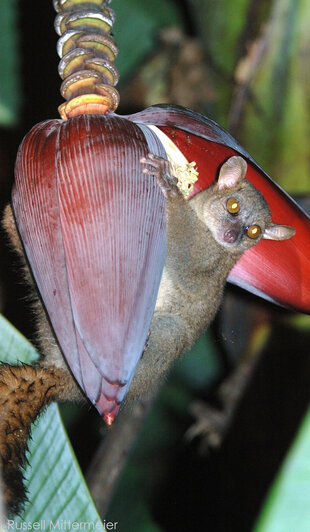Being a giant is a relative thing. At around 300g, a Giant Mouse Lemur has hardly large, but this is 10 times the body weight of Madame Berthe's Mouse Lemur: the smallest of all lemurs - the smallest of all living primates, in fact.
Giant mouse lemurs form the third branch of the Cheirogaleidae family, of which the other two branches are the Mouse Lemurs and Dwarf Lemurs. Like all of the Cheirogaleidae lemurs, giant mouse lemurs are primarily nocturnal. Their diet is very similar to mouse lemurs, consisting of fruit, tree gum, insects and small vertebrates. Their main predators include the Madagascar buzzard, owls, fossa and the narrow-striped mongoose.
There are two known species of giant mouse lemur:
The Northern Giant Mouse Lemur (Mirza zaza) ranges between 250g and 300g when fully grown and is found in a very small area of Madagascar in the Sambirano Valley. This limited range makes them Vulnerable to Extinction; yet where they do survive, their population density is high at between 385 and 1086 individuals per square kilometre. What a difference some habitat reconstruction could make.
Coquerel's Giant Mouse Lemur (Mirza coquereli) weighs in at 290g - 320g when fully grown. This lemur can be found in located in western dry deciduous forests of Madagascar. They survive in an overall much larger area than the Northern Giant Mouse Lemurs are found; however, sightings are not common, so it is considered that this species is Endangered - one step closer to the end of existence than Vulnerable. Habitat disturbance and forest clearance for slash and burn farming are the primary threats for all types of lemur.
Northern Giant Mouse Lemur Photograph courtesy of Russell Mittermeier Conservation International www.conservation.org

